#ClimbforLife
Explore tagged Tumblr posts
Photo

Climbing Kilimanjaro on Lemosho Route Via Western Breach must be the one of the toughest and most physical challenging trails #DoKilimanjaro2023 #ClimbKili2023 #kilimanjarosafari #kilimanjaronationalpark #mountkilimanjaro #roofofafrica #ontopoftheworld #highestsummit #climbforlife #kilimarathon #climbeverymountain #mountelbrus #climbelbrus (at Lemosho Route) https://www.instagram.com/p/CoWQJESolOQ/?igshid=NGJjMDIxMWI=
#dokilimanjaro2023#climbkili2023#kilimanjarosafari#kilimanjaronationalpark#mountkilimanjaro#roofofafrica#ontopoftheworld#highestsummit#climbforlife#kilimarathon#climbeverymountain#mountelbrus#climbelbrus
0 notes
Photo

The gang ☺️ • • • • • • • #choosemountains #alpinebabes #seekthetrails #mountaingirls #seekthetrails #mountaingirls 😘#hikinggirl #hikinggirls #hikinginspiration #mountaineer #sevensummits #notdeadyet #alwaysalittlehigher #womenunite #hikinggirlsrock #climbforlife #trailhiking #hikingviews #expeditionlife #mountainscenery #adventuretime #adventuretravel #liveadventurously #hike #sheadventure #adventurevisuals #sonia😎😘 #mountainvibes #liveamongthewild #hiketheworld (at Lower Antelope Canyon) https://www.instagram.com/p/Bzy2ZR2Do7g/?igshid=16chsxymi6z7q
#choosemountains#alpinebabes#seekthetrails#mountaingirls#hikinggirl#hikinggirls#hikinginspiration#mountaineer#sevensummits#notdeadyet#alwaysalittlehigher#womenunite#hikinggirlsrock#climbforlife#trailhiking#hikingviews#expeditionlife#mountainscenery#adventuretime#adventuretravel#liveadventurously#hike#sheadventure#adventurevisuals#sonia😎😘#mountainvibes#liveamongthewild#hiketheworld
0 notes
Text
Tips for Forearm Fatigue & Muscle Cramps
Article by Forrest Kolaski

If you’ve climbed once or regularly for years, you have probably experienced forearm pump and fatigue in your fingers. Climbing builds great grip strength, but sometimes your body speaks up and says enough is enough. There are a couple quick tips you can do in a moment or two that will help. Let’s call these the instant relief techniques.
youtube
Holding your arms overhead for up to 3 minutes and then swinging them below your body is a way of refreshing the blood to your forearms and fingers. While your hands are up there you can extend you fingers, stretching the flexor muscles that work so hard while you are climbing.
If you find yourself cramping often while climbing, another thing to consider is your hydration and nutrition. If climbing for less than an hour, water should be enough to replenish you during your session. If you know you’ll be active for more than an hour, you might want to consider replenishing your electrolytes about 30-45 minutes into your session.
Water keeps your blood flowing, literally. It helps transport the necessary nutrients to your muscles and helps clear waste. 2-3 liters a day is a good baseline, when increasing your exercise you’ll want to increase your water intake (up to 5 additional liters if say you were running a marathon on a hot summer day). People’s needs vary, so find what works for you.
Electrolytes help with muscle function. A cramping muscle during exercise is typically is due to overuse and under nourishment. There are four electrolytes: sodium, calcium, potassium and magnesium.
All that stuff your grandma told you about eating your fruits and vegetables and drinking water as a kid still apply. In a pinch a sports drink will do, but really your hydration and nutrition should start hours or even a day or more before your climbing session or exercise.
Forrest Kolaski is a local climber and personal trainer based out of Pawtucket, RI. Learn more about his business on his website: http://ForrestFitnessRI.com
You can also read his “Climbers of Rock Spot” feature here.
This is the third part of an 12 part blog series. Use the following outline here to follow along as posts are made every Saturday.
2 notes
·
View notes
Photo

Check out this highly detailed #climbingrope tattoo that @_ryhno_ did! #climbing #rope #climbers #climbforlife #tattoo #tattoos #boulder #bouldertattoo #bouldertattoos #bouldertattooer #bouldertattooers #bouldertattoostudio #bouldertattoostudios #clawandtalontattoo #bouldercolorado #colorado #coloradotattoo #coloradotattoos #coloradotattooer #coloradotattooers #coloradotattoostudio #coloradotattoostudios #thebesttattoos #thebesttattooers #radtattoos #instatattoo #tattoosofinstagram (at Claw and Talon Tattoo)
#tattoos#bouldertattoostudios#clawandtalontattoo#bouldertattoostudio#thebesttattoos#instatattoo#bouldertattooer#bouldercolorado#climbingrope#bouldertattoos#coloradotattooer#tattoosofinstagram#coloradotattoostudios#coloradotattoos#coloradotattooers#climbing#climbers#boulder#colorado#coloradotattoo#thebesttattooers#coloradotattoostudio#bouldertattooers#climbforlife#radtattoos#rope#tattoo#bouldertattoo
0 notes
Photo

#Repost @taramandibandung with @repostapp ・・・ Descending at Dago Bengkok, North of Bandung #bandungretrovintagebicycles #bandungutara #beautifulbandung #thmfibula #m2racer #beautifulmemories #climbforlife 🚴🚴🏼♀️ My #brother my #mentor~ 🙅🏻♂️🙋🏻
#climbforlife#bandungretrovintagebicycles#beautifulmemories#beautifulbandung#brother#thmfibula#bandungutara#mentor#m2racer#repost
0 notes
Photo

Flashback Saturday! #ClimbforLife (at Mt. Romelo (Buruwisan), Sinoloan, Famy, Laguna)
0 notes
Photo

Welcome to my gym great morn climb sesh now off to work!! #climbing #rockclimbing #fitlife #workout #climbforlife #fitness
1 note
·
View note
Photo

Couples for climb 2014 at Mt. Tapulao Zambales #duanesarah #mariosarah #highestpeak #majorclimb #thankful #blessed #(c)melvin #mttapulao #climb #trekking #signaturepose #couplesclimb #climbforlife #mountaineering #lovelivelife #naturelover #lovelovelove
#duanesarah#climbforlife#majorclimb#naturelover#signaturepose#mariosarah#lovelovelove#blessed#highestpeak#mountaineering#thankful#couplesclimb#trekking#lovelivelife#climb#mttapulao
0 notes
Text
My Hands
My hands aren’t like a woman’s hands.
A woman’s hands are small, delicate and gentle.
My hands aren’t like a woman’s hands.
My hands are rough, hard, and callused.
My hands are strong.
My hands are tough.
Though my hands are that of a woman they aren’t a woman’s hands.
My hands aren’t a woman’s hands because of a man.
A man…
A man made my hands not like a woman’s hands because I was shown something.
Something that most women don’t do.
Something hard.
Something tough.
Something Intense.
Something breathtaking.
I am a woman but my hands aren’t that of a woman’s.
My hands….
My hands are that of a rock climber.
1 note
·
View note
Text
Tips for Hip & Shoulder Mobility
Article by Forrest Kolaski
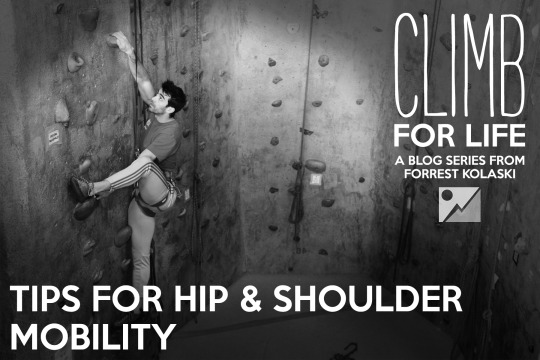
When it comes mobility it all starts with the hips and shoulders. For general mobility work, refer back to the exercises to do before you climb, as these are an excellent starting point. The interesting thing about mobility is people often don’t realize they can’t reach something if they had better mobility. Oftentimes, things out of reach remain out of reach.
Hip Mobility Tests
Here are some milestones for hip mobility. For many, these types of positions are seemingly impossible at first and there are ways to get within reach of these maneuvers. But first, it might be worth thinking about them.
Can you:
Keep your hips against the wall while one foot is on a hold around knee height? Can you do the same on both sides?
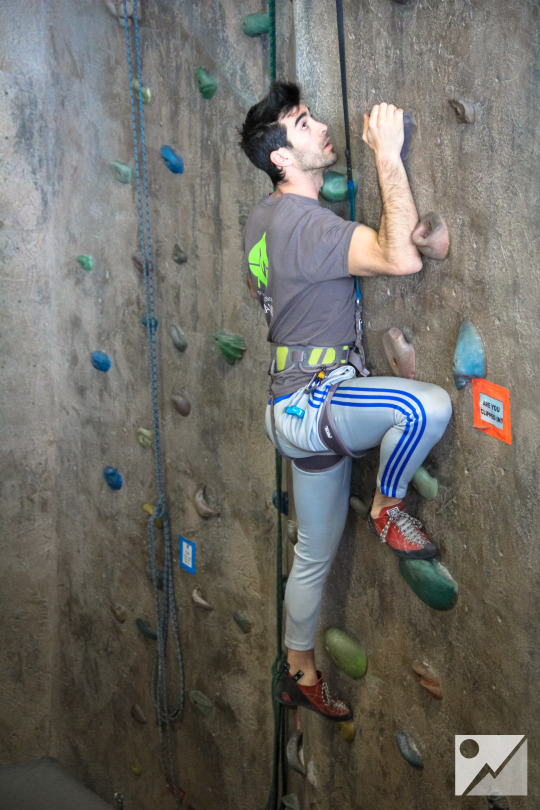
Can you match foot to hand?
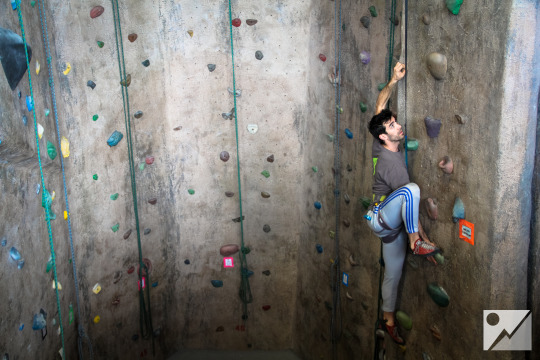
Can you match heel to hand?

These are interesting challenges and a good test for finding your baseline in your climbing hip mobility.
Shoulder Mobility Tests
Shoulders can articulate in a much more complex range and for simplicity sake, an assessment of shoulder mobility will be more easily performed while not climbing.
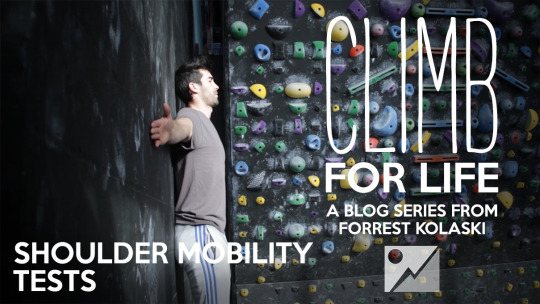
https://youtu.be/ms9LVvtB-p0
In order of difficulty:
Wall supine
Can you keep your chest against the wall or even have space between your hands and the wall?
Wall prone
Can you make contact with the wall all the way through the movement?
Floor supine
Can you make contact with the floor all the way through the movement?
Floor prone
Can you create space between your hands and the floor all the way through the movement?
Mobility Stretches
Both the hip and shoulder assessments seen so far are ways to find hard to reach positions and look for movement’s that are challenging. Now let’s look at some ways to improve these challenging ranges of movement.
Breztel Stretch
youtube
Scorpion
youtube
Reverse Scorpion
youtube
Squat & Reach
youtube
Twisted Bridge
youtube
If you have great range of motion these assessments and movements may not be hard for you at all, if that is the case chances are there are other, lower hanging fruit like strength or technique. Stay tuned for tips on strength!
Forrest Kolaski is a local climber and personal trainer based out of Pawtucket, RI. Learn more about his business on his website: http://ForrestFitnessRI.com
You can also read his “Climbers of Rock Spot” feature here.
0 notes
Text
My Water Usage
I decided to keep track of the amount of water I use every day, to compare to what is available to people living in areas of East Africa.
Especially with the drought currently going on here the results are very interesting!
This was Tuesday July 17th, but journal- wise, a pretty typical day in my life - I shower every night and drink at least 2.5 litres of water every day.
I used the Water Conservation School's water calculator to help me estimate. If any one knows of another analysis tool to try, let me know!
6 AM, toilet flush: Older model toilets use around 5 to 7 gallons of water, while new models use 1 to 2 gallons. Ours is older, so I'll say 6 gallons of water.
wash up/ brush teeth: about 8 gallons of water with all the hand washing in between.
8 AM -5 PM, work: my office is really dry so I am constantly drinking water. Today I drank 2.5 litres from my reusable uOttawa water bottle.
In reaction to all that water I used the bathroom 4 times today. My building is very eco- conscious and I assume they have new toilets so I estimate 8 gallons of water was used. With hand washing after each use, that's about 10 gallons of water for all 4 trips.
6 PM, home: dinner was pre- made, did not require use of any water for cooking.
filled the sink up with my family's dishes and the water ran in total for about 10 minutes, equaling 30 gallons of water used.
toilet flush: 6 gallons plus a little to clean my hands.
8 PM, shower: On average showers use 5 gallons of water a minute, I took a 20 minute shower because I had to wash my hair, that's 100 gallons of water. My jaw dropped when I saw that!
10 PM, toilet flush: another 6 gallons.
Total for the day: approx. 170 gallons of water.
I think I'm being easy on myself in estimating that amount. On other days there is laundry to be done, water used for cooking, more dishes, dishwasher, maybe plants and the lawn to be watered and we have a pool.
Although...and sorry for the grody factor, my brothers and I share a bathroom and have a (unspoken rule??) tendency to not always flush so we are saving water there.
I think investing in hand sanitizer is a good idea because I am a little OCD about having clean hands and that would save running the tap. I'm also going to start to be even more conscious in the shower and only turn on the tap when I really need it, since the shower seems to be where I suck up the most water.
According to WaterCan, in Tanzania, ...
"More than a third of [the] population does not have access to clean drinking water and even more don’t have a safe and private place to relieve themselves."
The country's water supply covers 62% with sanitation covering 47% compared to Canada's 100% for both...yikes:

I can't imagine waking up and not having such easy access to an unlimited amount of clean water. In Tanzania and other developing countries it's women who typically carry the burden of fetching water. In rural areas, women often walk as far as 16 KM (10 miles) or more every day, which is a danger in itself. Not to mention they aren't always collecting clean water.
Once I'm in Tanzania and I can see first hand what women and villages go through for clean water - I'll be even more thankful for how lucky I am. I'm worried about how I will handle it emotionally but ultimately I know my work and fundraising is going to really good use.
1 note
·
View note
Photo

Exploring Siniloan. A safe and sound climb. #ClimbForLife #BuruwisanFalls #LansonesFalls #BatyaBatyaFalls
0 notes
Text
The Mobility-Strength-Technique Paradigm
Article by Forrest Kolaski
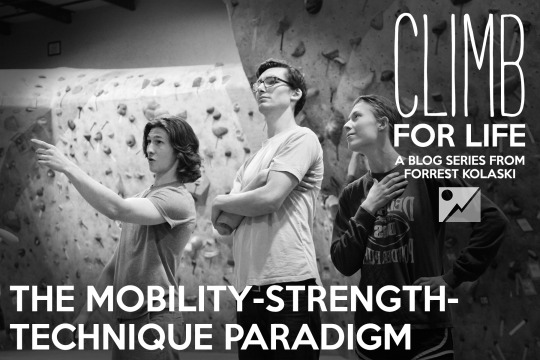
Up to this point we have talked about being prepared, having a plan and troubleshooting fatigue. Now we are going to dig a little deeper, talk about finding the low hanging fruit and how to develop as a balanced climber.
There are three major categories for improvement within a the sport of climbing that you can focus on are:
Mobility - Strength - Technique
Mobility will allow you to reach further, save energy by not having to fight your own range of motion and open doors to positions on the wall. It will also reduce cramping, hot spots in the muscles and muscle imbalance over time. Mobility is also one of the great reasons to climb as part of a healthy lifestyle. Climbing forces you to move your body in ways that it’s not accustomed to.
Strength is a little more straightforward. By being stronger you can hold on longer, perform harder movements and endure overhangs and more challenging positions. When it comes to climbing strength, most people will need to start with grip strength.
Technique improves overall efficiency which can save energy. Technique is one thing I will not cover on here, but must mention because being mobile and strong is helpful, but technique is how you utilize your strength and mobility. In order to build technique, you need to climb mindfully and/or get coached on technique.
These three elements when developed in unison will work synergistically to accelerate your learning, improvement and enjoyment while climbing. Start thinking about how you climb and where you excel and where you can improve.
Forrest Kolaski is a local climber and personal trainer based out of Pawtucket, RI. Learn more about his business on his website: http://ForrestFitnessRI.com
You can also read his “Climbers of Rock Spot” feature here.
This is the third part of an 12 part blog series. Use the following outline here to follow along as posts are made every Saturday.
0 notes
Text
How to Properly Take Advantage of the Pyramid
Article by Forrest Kolaski
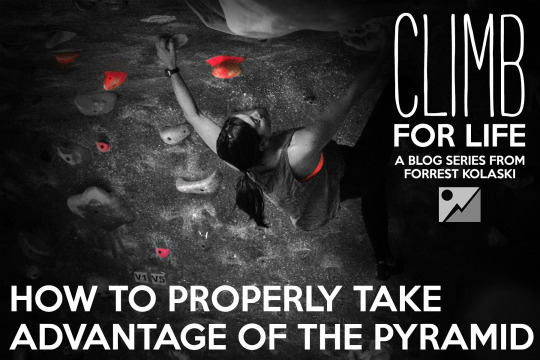
One of the best ways to make consistent progress is to use the pyramid technique or a ladder approach to your climbs. This simply means starting with easier climbs and progressing to harder climbs during the session and then regressing as you begin to fatigue.
Using this system will help you get in more climbs during a session which will open doors for opportunity in increasing your technique and you’ll build endurance by dialing back your climbs slowly instead of just stopping after burning out on a very hard climb. It will also help your body cool down and may increase your recovery time so you can climb more frequently.
Here is an example:
Say you are a climbing 5.7s and you want to progress to 5.8. A great way to approach this is to start with a 5.6, then a 5.7. At that point you are ready for your real challenge for the session and you go for a 5.8.
Keep challenging yourself with harder climbs until you begin to fatigue or can’t ascend, then work your way back down through a 5.7 and a 5.6. These final climbs, although not personal best attempts are crucial in building your endurance so that you’ll be able to climb longer in the future.
More experienced climbers may have a longer ladder of climbs to work through before they attempt a new challenge, but you’ll want to continue to work your way back down the ladder afterwards.
To break it down further, if you rate yourself 5.9, try these climbs in this order:
5.7 > 5.8 > 5.9 > 5.9+ > 5.8+ > 5.8 > 5.7
Warm up………..Peak………..Cool down
The exact pattern is not as important as the overall concept. Rest periods between climbs are important as well. I suggest a work to rest ratio of about 1:3 to 1:5, so if you climb for one minute take three to five minutes rest before your next attempt. Longer climbs require more rest.
We will go over more ways to increase climb time and reduce fatigue in next week’s post.
Forrest Kolaski is a local climber and personal trainer based out of Pawtucket. Learn more about his business on his website: http://ForrestFitnessRI.com
You can also read his “Climbers of Rock Spot” feature here.
This is the third part of an 12 part blog series. Use the following outline here to follow along as posts are made every Saturday.
0 notes
Text
7 Active Stretches to do Before Climbing
Article by Forrest Kolaski
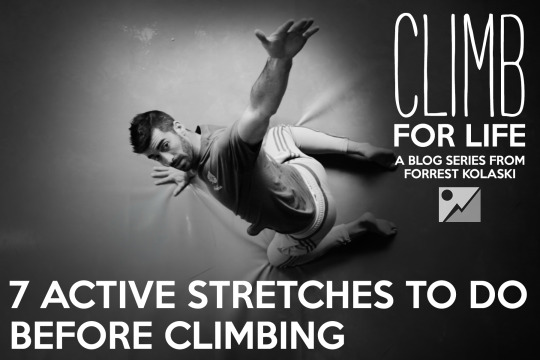
Active stretches are an important way to start any work out. Here are seven that you can easily integrate into your climbing routine to increase your flexibility and reduce your risk of injury while on the wall.
youtube
Deadbug
Basically you are a bug, scrambling to stay alive… This exercise wakes up your shoulders and hips, and activates your core.
Basic cues:
Elbows over shoulders
Knees over hips
Exhale as you reach with opposite hand and heel
Lengthen the body, while flexing the abs
Tuck chin slightly
Inhale as you return to starting position
The Table Top series
For efficiency you can do all the table top movements back to back. However, if this bothers your wrists you can split this up or take a rest in between.
youtube
Cat & Cow
This is a classic yoga movement and is excellent for waking up all the little muscles along your spine and between your shoulder blades. I like to initiate this movement at the hips because the hips are often harder for people to control than their necks.
Basic cues for cat:
Table top position: hands under shoulders, knees under hips
As if you had a tail, tuck your tail straight down
Draw in your belly button, lifting your abdomen high in the air
Spread your shoulder blades and exhale
Reach with arms into the floor
Tuck in your chin
Basic cues for cow:
Table top position: hands under shoulders, knees under hips
Imagine your hips (pelvis) as a bowl of water and pour it out below you, lifting your tail up
Reach to the floor with your belly button and open your rib cage
Squeeze your shoulder blades together, inhale and expand your chest
Lift your chin and press your tongue to the roof of your mouth
youtube
Handwork
Forearms are like the calf of the upper limb (arms). Handwork is very much like a calf raise or going up on your tippy toes. One of the keys to this exercise is getting the right amount of resistance. You can vary the amount of resistance by leaning back onto your knees (less resistance) or leaning on to your hands (more resistance). You might want to try this on a hard, flat surface at first or even against a wall.
Basic cues:
Table top position: hands under shoulders, knees under hips
Variation 1:
Lift the heel of the palms off the ground pressing into the largest knuckle of the hands
Descend slowly and in control
Variation 2:
Press the fingertips into the floor, lifting the entire palm.
Descend slowly and in control
youtube
Bird Dog
Again a classic yoga and physical therapy movement, bird dog is great for opening up your hips and waking up the backs of your shoulder. It activates the glutes and shoulder stabilizers. You can modify your table top in this exercise to a more narrow base to challenge your balance, if you’re up for that.
Basic cues:
Table top position: hands under shoulders, knees under hips
Exhale as you reach with opposite hand and heel, while gripping the floor with base hand
Lengthen the body, while flexing the glutes and abs
Inhale as you return to table top
youtube
6 Point Zenith
This movement comes from a great trainer by the name of Dan John, the 6 point refers to the six points of contact you make with the floor while in table top and zenith refers to reaching as high as you can, directly above you. Zenith is the highest point reached by a celestial object and we are all made of star stuff… Anyways!
Basic cues:
Table top position: hands under shoulders, knees slightly wider than your hips
Lift one hand and reach under your body, keeping you base arm straight
Extending at your shoulder, keeping your hips level
Draw the reaching arm back through and up overhead
Keep your hips level and reach to zenith
Repeat or return to table top and switch sides
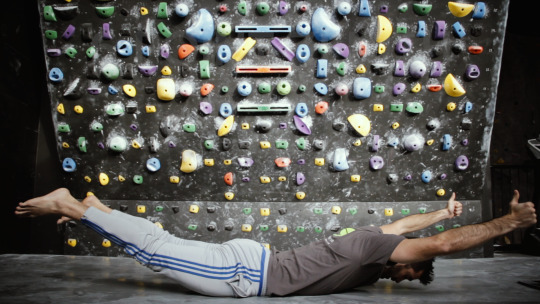
Due to Tumblr limitations, click here for the video
Superman
Also known as the back extension, this exercise is great for posture and strengthening the back (posterior chain). Better posture means increased confidence which might make you feel like a Superhero, be warned.
Basic cues:
Lay face down (prone position)
Place your arms overhead with your thumbs up for positivity (slip and slide position)
Lift your arms leading with your shoulders
Lift your legs using your glutes
Notice in the video that the lower back does not change position, it engages isometrically
Lower the arms and body simultaneously
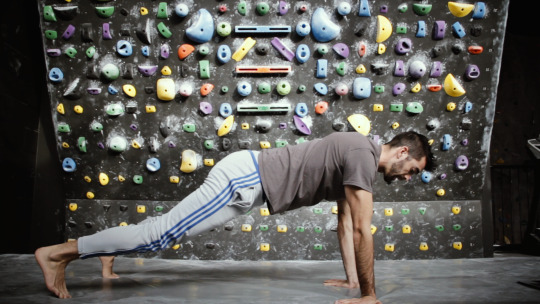
Due to Tumblr limitations, click here for the video
PUPP Hand Dials
Push Up Position Plank (PUPP) hand dials are an advanced version of the hand work. For some, simply the plank will be challenging enough. You can add in the hand dials if you are looking for more forearm and rotational core strength and warm up.
Basic cues:
Find PUPP, hands under shoulders with your legs out straight, on your toes
Widen stance between feet for more balance, narrow feet for greater challenge
Start with your thumbs facing each other
Shift your weight to one hand to rotate the opposite hand towards the outside (supinate)
Forrest Kolaski is a local climber and personal trainer based out of Pawtucket. Learn more about his business on his website: http://ForrestFitnessRI.com
You can also read his “Climbers of Rock Spot” feature here.
This is the second part of an 12 part blog series. Use the following outline here to follow along as posts are made every Saturday.
0 notes
